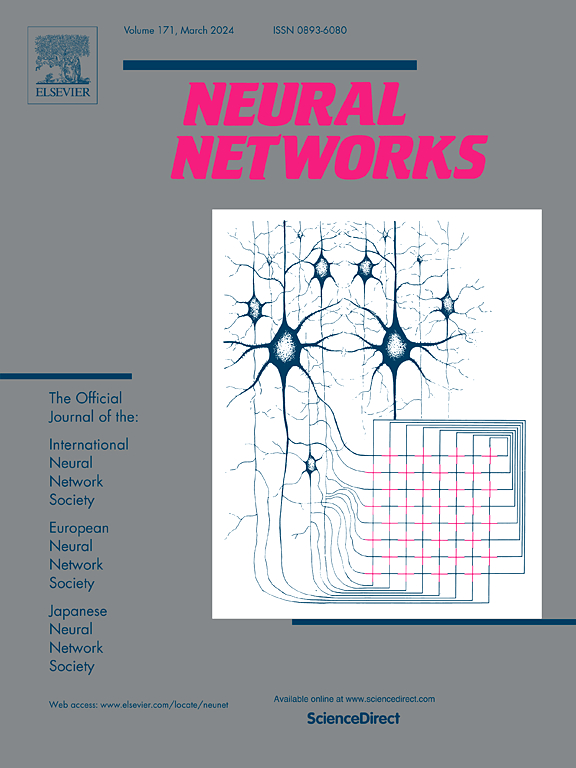Spiking neural networks on FPGA: A survey of methodologies and recent advancements
IF 6
1区 计算机科学
Q1 COMPUTER SCIENCE, ARTIFICIAL INTELLIGENCE
引用次数: 0
Abstract
The mimicry of the biological brain’s structure in information processing enables spiking neural networks (SNNs) to exhibit significantly reduced power consumption compared to conventional systems. Consequently, these networks have garnered heightened attention and spurred extensive research endeavors in recent years, proposing various structures to achieve low power consumption, high speed, and improved recognition ability. However, researchers are still in the early stages of developing more efficient neural networks that more closely resemble the biological brain. This development and research require suitable hardware for execution with appropriate capabilities, and field-programmable gate array (FPGA) serves as a highly qualified candidate compared to existing hardware such as central processing unit (CPU) and graphics processing unit (GPU). FPGA, with parallel processing capabilities similar to the brain, lower latency and power consumption, and higher throughput, is highly eligible hardware for assisting in the development of spiking neural networks. In this review, an attempt has been made to facilitate researchers’ path to further develop this field by collecting and examining recent works and the challenges that hinder the implementation of these networks on FPGA.
求助全文
约1分钟内获得全文
求助全文
来源期刊

Neural Networks
工程技术-计算机:人工智能
CiteScore
13.90
自引率
7.70%
发文量
425
审稿时长
67 days
期刊介绍:
Neural Networks is a platform that aims to foster an international community of scholars and practitioners interested in neural networks, deep learning, and other approaches to artificial intelligence and machine learning. Our journal invites submissions covering various aspects of neural networks research, from computational neuroscience and cognitive modeling to mathematical analyses and engineering applications. By providing a forum for interdisciplinary discussions between biology and technology, we aim to encourage the development of biologically-inspired artificial intelligence.
 求助内容:
求助内容: 应助结果提醒方式:
应助结果提醒方式:


